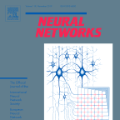A Literature Review of Reservoir Computing. Even before Artificial Intelligence was its own field of computational science, humanity has tried to mimic the activity of the human brain. In the early 1940s the first artificial neuron models were created as purely mathematical concepts. Over the years, ideas from neuroscience and computer science were used to develop the modern Neural Network. The interest in these models rose quickly but fell when they failed to be successfully applied to practical applications, and rose again in the late 2000s with the drastic increase in computing power, notably in the field of natural language processing, for example with the state-of-the-art speech recognizer making heavy use of deep neural networks. Recurrent Neural Networks (RNNs), a class of neural networks with cycles in the network, exacerbates the difficulties of traditional neural nets. Slow convergence limiting the use to small networks, and difficulty to train through gradient-descent methods because of the recurrent dynamics have hindered research on RNNs, yet their biological plausibility and their capability to model dynamical systems over simple functions makes then interesting for computational researchers. Reservoir Computing emerges as a solution to these problems that RNNs traditionally face. Promising to be both theoretically sound and computationally fast, Reservoir Computing has already been applied successfully to numerous fields: natural language processing, computational biology and neuroscience, robotics, even physics. This survey will explore the history and appeal of both traditional feed-forward and recurrent neural networks, before describing the theory and models of this new reservoir computing paradigm. Finally recent papers using reservoir computing in a variety of scientific fields will be reviewed.
翻译:暂无翻译













